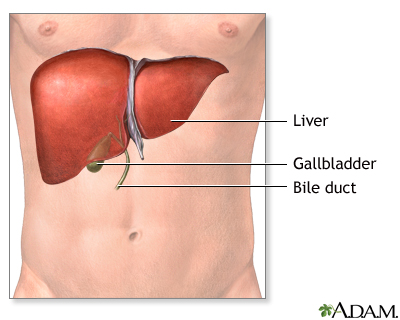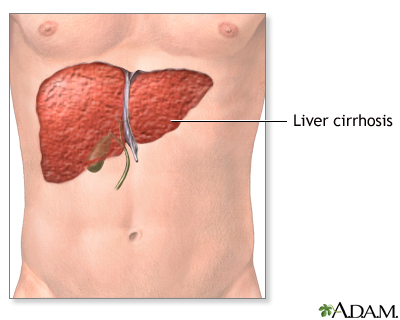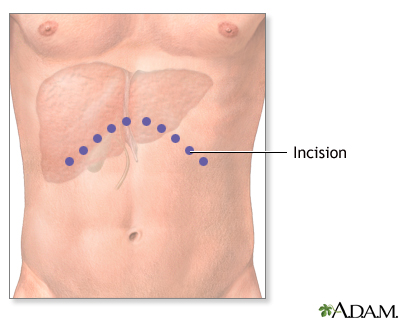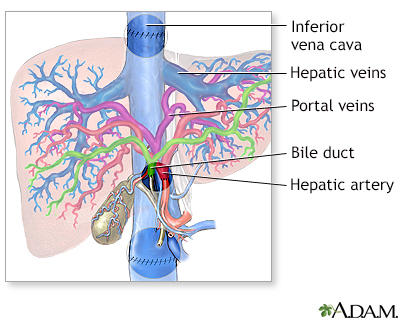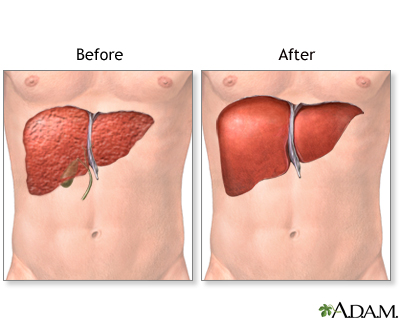Liver transplant
| Normal anatomy |
|
The liver is in the right upper abdomen. The liver serves many functions, including the detoxification of substances delivered to it from the intestines, and the synthesis of many proteins.
|
|
| Indications |
|
A liver transplant may be recommended for:
- liver damage due to alcoholism (Alcoholic cirrhosis)
- primary biliary cirrhosis
- long-term (chronic) active infection (hepatitis)
- liver (hepatic) vein clot (thrombosis)
- birth defects of the liver or bile ducts (biliary atresia)
- metabolic disorders associated with liver failure (e.g., Wilson's disease)
|
|
| Incision |
|
Liver failure causes many problems, including malnutrition, problems with blood clotting, bleeding form the gastrointestinal tract, and jaundice. Frequently, patients who undergo liver transplantation are quite ill, and require hospitalization in the Intensive Care Unit prior to surgery. A large, upper abdominal transverse incision is used for liver transplant.
|
|
| Procedure |
|
Liver transplants are performed in many centers across the country. The healthy liver is obtained from a donor who has recently died but has not suffered liver injury. The healthy liver is transported in a cooled saline solution that preserves the organ for up to 8 hours, thus permitting the necessary analysis to determine blood and tissue donor-recipient matching. The diseased liver is removed through an incision made in the upper abdomen. The new liver is put in place and attached to the patient's blood vessels and bile ducts. The operation can take up to 12 hours to complete and requires large volumes of blood transfusions.
|
|
| Aftercare |
|
Patients require hospital care for one to four weeks after liver transplant, depending on the degree of illness. After liver transplantation, patients must take immunosuppressive medications for the rest of their lives to prevent immune rejection of the transplanted organ.
|
|

|
Review Date:
6/11/2024
Reviewed By:
Jenifer K. Lehrer, MD, Department of Gastroenterology, Aria - Jefferson Health Torresdale, Jefferson Digestive Diseases Network, Philadelphia, PA. Review provided by VeriMed Healthcare Network. Also reviewed by David C. Dugdale, MD, Medical Director, Brenda Conaway, Editorial Director, and the A.D.A.M. Editorial team. |
The information provided herein should not be used during any medical emergency or for the diagnosis or treatment of any medical condition. A licensed medical professional should be consulted for diagnosis and treatment of any and all medical conditions. Links to other sites are provided for information only -- they do not constitute endorsements of those other sites. No warranty of any kind, either expressed or implied, is made as to the accuracy, reliability, timeliness, or correctness of any translations made by a third-party service of the information provided herein into any other language. © 1997-
A.D.A.M., a business unit of Ebix, Inc. Any duplication or distribution of the information contained herein is strictly prohibited.
© 1997-

All rights reserved.

